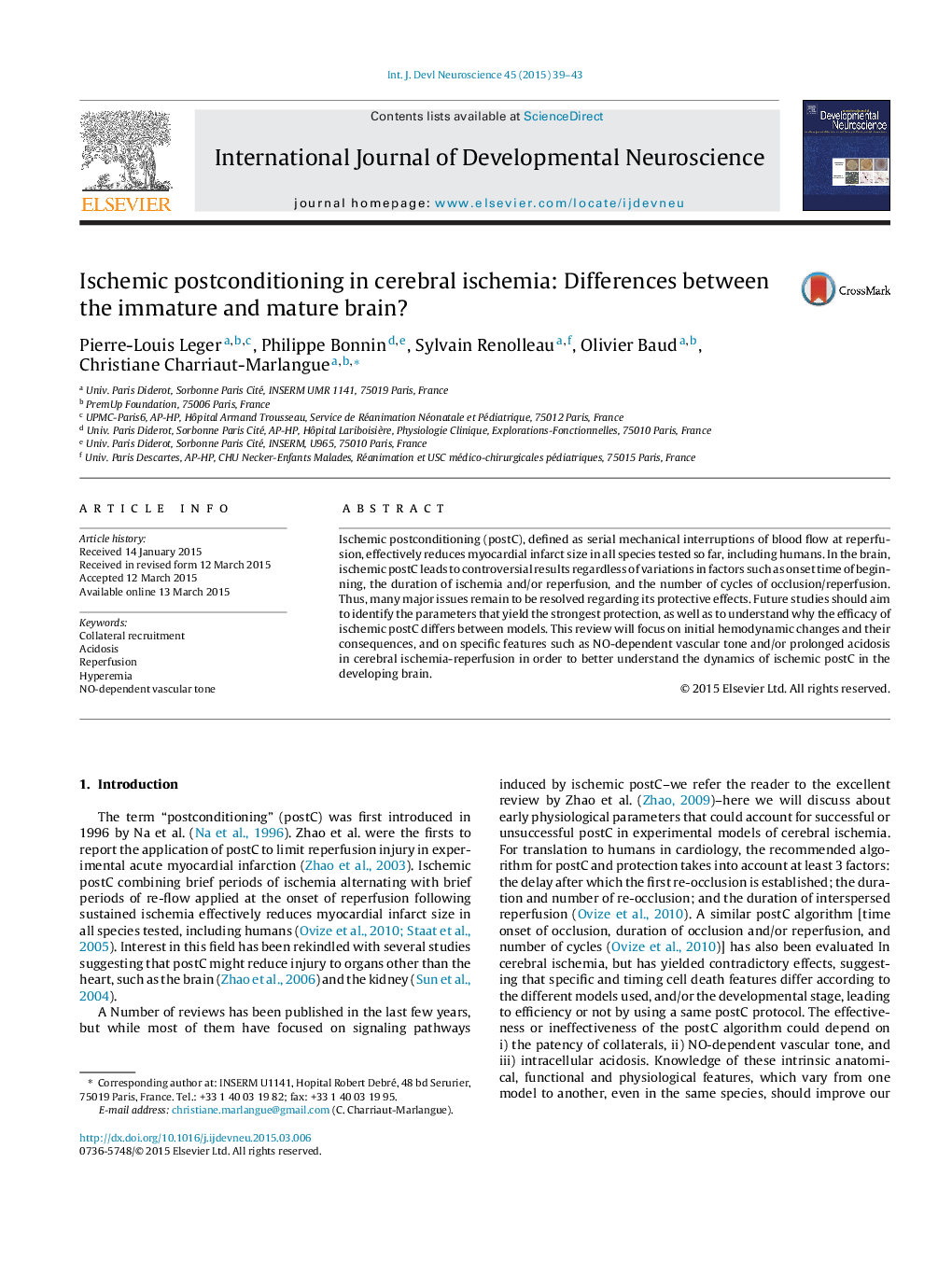| Article ID | Journal | Published Year | Pages | File Type |
|---|---|---|---|---|
| 2785832 | International Journal of Developmental Neuroscience | 2015 | 5 Pages |
Ischemic postconditioning (postC), defined as serial mechanical interruptions of blood flow at reperfusion, effectively reduces myocardial infarct size in all species tested so far, including humans. In the brain, ischemic postC leads to controversial results regardless of variations in factors such as onset time of beginning, the duration of ischemia and/or reperfusion, and the number of cycles of occlusion/reperfusion. Thus, many major issues remain to be resolved regarding its protective effects. Future studies should aim to identify the parameters that yield the strongest protection, as well as to understand why the efficacy of ischemic postC differs between models. This review will focus on initial hemodynamic changes and their consequences, and on specific features such as NO-dependent vascular tone and/or prolonged acidosis in cerebral ischemia-reperfusion in order to better understand the dynamics of ischemic postC in the developing brain.
